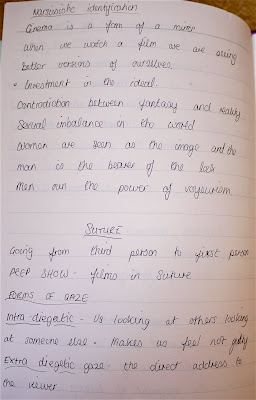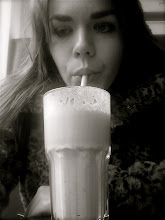I suggested that Charlotte and I chose the film ‘How to lose a guy in 10 days’ not based on its quality or success as a film, but mainly for its not so subtle visual language.
The film was released in the USA, 7th February 2003 and was directed by Donald Petrie, produced by Richard Vane and distributed by Paramount Pictures. It was based on a cartoon self help book of the same name by Michele Alexander and Jeannie Long released in 1998.
The film starred Kate Hudson and Matthew Mc Conaughey and its worldwide total grossed at £67,646,382.14, ranking itself; according to Box Office Mojo worldwide in 2003 at number 24, being beaten by other rom. coms. such as ‘Something’s Gotta Give’ and ‘Love Actually’.
The basic plot is a tale of two attractive, middle class New Yorkers that end up falling in love with each other initially for all the wrong reasons.
Andie (Kate Hudson) plays a ‘How to…’ column writer for a women’s magazine and really would prefer to be writing seriously about politics and religion but instead is forced to write about cosmetic surgery and shoes. When her co-worker gets dumped for the umpteenth time by her boyfriend for being psychotically too clingy, Andie decides her next column will be ‘How to lose a guy in 10 days’ where she will date a guy and proceed to act out all the clichéd don’ts that women do to drive men away.
Meanwhile Ben (Matthew Mc Conaughey) an advertising executive is trying to convince his boss for him to handle a big advertising campaign for diamonds when his two rival co-workers suggest that he proves his persuasion skills by making a woman fall in love with him in 10 days and by a preposterous fate the two manage to find each other and proceed in a battle of the sexes and in an un imaginable ending happen to fall in love with each other.
When thinking about the films context of production you can definitely say it was a tactical decision to release the film a week before Valentines Day and other than that I wouldn’t say there were many other meaningful reasons for its production.
Romantic comedies are a genre of film that appear to get churned out every year and by following the stereotypical plot line of boy meets girl – boy loses girls – boy wins girl, generally follows a safe and satisfying story line that usually receives mediocre ratings.
The director of ‘How to lose a guy…’Donald Petrie is not known for many box office smashes or hard hitting story lines but instead seems to prefer producing light hearted comedies, mainly romantic comedies such as ‘Miss Congeniality’, ‘Just my luck’ and ‘My life in ruins’ and therefore hasn’t exactly stepped out of the box with this one.
To compare it to another romantic comedy released that same year, ‘Something’s gotta give’ according to Box Office Mojo’s 2003 chart it reached number 16 giving it a total worldwide gross of £79,752,160.057.
I think reason’s why this was more successful was that it played on a less conventional stereotype of a middle aged, younger woman-loving bachelor that finally realises what he’s been missing about women of a similar age. A love story of two middle aged people is less common than the usual teen or twenty something coupled movies that are churned out in their droves every year. It also has a more sentimental message; that an older woman can appear attractive to men of all ages whereas ‘How to lose a guy’s’ message is somewhat lost on me and seems like a chauvinistic dig at women on how they shouldn’t behave.
‘Something’s gotta give’ also has a far more successful and talented cast such as Jack Nicholson, Diane Keaton and Keanu Reeves. Where as Kate Hudson appears to have only been successfully noted for her debut performance in ‘Almost Famous’ and Matthew Mc Conaughey has appeared in numerous mediocre rom. coms. but appears to have not had a stand out performance in any.
When considering visual language in ‘How to lose a guy in 10 days’ we concentrated on camera angles and movement but also the connotations of the characters dress, stage sets, locations and music changes.
We initially considered the introduction of the characters in scenes 1-3.
Andie was the first character to be introduced giving you the feeling that she is the main protagonist in the film and this shows her dealing with the subjects of her ‘How to..’ column which deals with fluffy female clichéd issues such as using her female charms to win over a traffic officer, in turn giving you the impression that she is perhaps a fluffy, stereotypical female.
This is then quickly contradicted with a close up of a reading of a political piece of writing she has completed giving you the idea she is a character of more depth and not happy in her current line of work.
Camera angles continuously seem to play over her shoulder to give the viewer a feeling of being there in the moment, like Andie is talking to the audience as her group of girlfriends.
The office she works in is colourful, bright, airy and open plan giving you a feminine care free feeling of Andie’s character.
I also picked up on Andie’s opening dress that was neutral in colour and wearing a plain white shirt similar perhaps to that a man may wear, I felt gave an ambiguous vibe to her character not of sexuality preference but of tastes as we are quickly introduced to the fact that she is a massive fan of the dominantly male sport of NBA basketball. This is also noted in her name Andie which depending on spelling could be a male or female name, all of which including her beer drinking and scoffing of food connotes she is not your typical girly girl almost suggesting throughout the film that women should act more male-like to therefore find the man of their dreams.
Moving on to Ben’s character I noticed the music that’s played throughout the film always relates to the character whether it’s an upbeat and poppy female singer for Andie or a more rock, guitar led growl for Ben.
In Ben’s opening scene he rides through the New York traffic on his motorcycle to George Thorogood’s ‘Who do you love?’ which is key to his character as he claims that he can make any woman fall in love with him in 10 days.
He’s dressed stereotypically macho in black leather to then take off his helmet to reveal his blonde American locks and chiselled manly jaw line.
Camera movements for Ben tend to be more quick and punchy than for Andie and the camera mostly looks up at him giving the viewer and his other characters in the film a feeling that we should admire this man.
There was an instant contrast in Ben’s office of darker lighting, green walls and dark wood cladding giving you a feeling of being in the men’s lounge at a members only golf club. Within minutes he takes off his shirt in the middle of the office where female co-workers coo at him, just re-affirming to the audience that he is a male god.
So from offset we are introduced to two very strong characters who we presume are going to meet and clash in someway and of course they do but we couldn’t help but feel that this was more than just poking fun at women’s bad dating habits but more of a condescending extremely male view on a noughties remake of a 1950’s ‘How to make a good wife’. Some of course won’t see it this way and for some men it may just re-affirm to them how crazy women can be and make some women even more paranoid about their dating habits, either way it does not give out any healthy moral message.
As with all rom.coms there are twist and turns in the film taking the audience on a rollercoaster ride of ‘Oh yes they’re falling in love with each other’ and ‘Oh no are they going to get back together?’ which if you’ve seen any rom. com. we all know they will.
In the final scene we see Benjamin Barry tear through New York again on his motorcycle to rescue his damsel from leaving New York for a new job in Washington.
We then find them on the middle of a bridge together; Benjamin Barry and Andie Anderson, such contrived rhyming names! Of course there is practically a tub of Vaseline smeared all over the camera lens as he lets her know of his true feelings and we end with a Hollywood kiss.
What annoyed me about this ending was that he stopped her from going out and getting the serious writing job she wanted all along connoting a message that women should sacrifice their dreams for men. Also we see very early on the obvious pivotal moment when Andie realises that she’s in love with Ben but not until the very end does Ben finally realise the same, as of course this macho man can’t be seen to be as emotionally in touch with his feelings as a woman?
In our presentation we touched on the 5 typical points of structure in a rom. com; the introduction of two protagonist characters, the conflict, the revelation, the 2nd conflict and finally the 2nd revelation of love for both characters.
We initially broke up our speaking parts on subjects and scenes with Charlotte concentrating on camera angles and movement and myself on visual language of colours, dress, music and sets. We then summarised the end of the film together and our thoughts on its morals and message. The main problem we had was perhaps trying to fit in too many scenes to analyse and not knowing the exact timings of scenes to begin and end which made us rush through the presentation and leave out the odd point but I hope to have covered any lost points in this written piece.
Bibliography
Film studies notes on Visual Language
Filmography
‘How to lose a guy in 10 days’ 2003
‘Love Actually’ 2003
‘Just my luck’ 2006
‘My life in ruins’ 2009
‘Miss Congeniality’ 2000
‘Something’s gotta give’ 2003



















